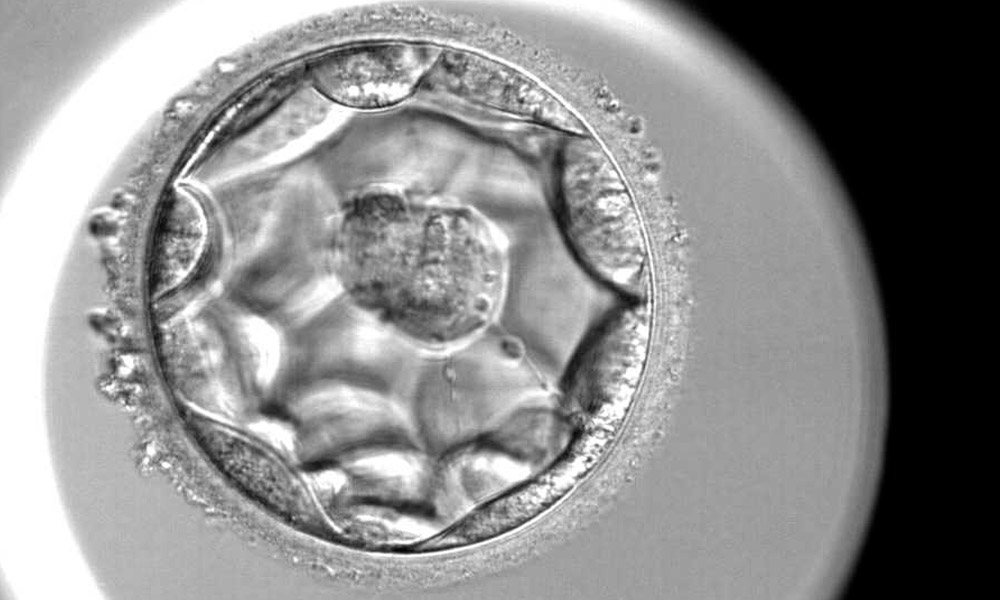Menu
Menu

Since the beginning of IVF, embryo selection has been based on morphology. Despite the emergence of new non-invasive selection methods, the majority of fertility centres continue to rely on morphological criteria. For this reason, the embryologist Carme Pons from Dexeus Mujer has led a retrospective multicentre study promoted by the Embryology Interest Group of ASEBIR. The aim of the study was to develop a new classification method at the blastocyst stage (day 5 of embryo development) that was objective, easy to use and included quantitative measures in the evaluation of the blastocyst.
A total of 6 fertility centres in Spain participated in the study and 1044 blastocysts were examined. The study included IVF cycles with oocytes from patients aged 18-39 years and egg donation cycles with recipients aged 18-45 years. The ultimate goal was to be able to distinguish the blastocysts with the highest potential among all the sibling embryos of a patient in order to shorten the time to the birth of a healthy child.
The study assessed the characteristics of the blastocysts (the degree of blastocyst expansion, the quality of the trophectoderm and the quality of the inner cell mass) both morphologically and morphometrically. The authors concluded that the use of quantitative cut-off points allows for an objective and replicable assessment of blastocysts, reducing inter-observer variability and allowing for a more accurate, reliable and easily replicable grading system.
Reference article:
Predicting the likelihood of live birth: an objective and user-friendly blastocyst grading system - ScienceDirect
Mª Carme Pons, Beatriz Carrasco, Natalia Rives, Arantza Delgado, Alvaro Martínez-Moro, Luís Martínez-Granados, Ignacio Rodriguez, Olga Cairó, Irene Cuevas-Saiz, SIG Embryology of ASEBIR.
Reproductive Biomedicine online. Available on line 3 juny 2023.
doi: https://doi.org/10.1016/j.rbmo.2023.05.015
DEXEUS CAMPUS
Gran Vía de Carles III 71-75
08028 Barcelona
campus@dexeus.com
(+34) 93 227 47 09
® Copyright 2021-2024 Dexeus Mujer Foundation – Gran Via Carles III 71-75. 08028 Barcelona. Spain
| Cookie | Duration | Description |
|---|---|---|
| cookielawinfo-checkbox-analytics | This cookie is set by the GDPR cookie consent plugin. The cookie is used to store the user's consent for cookies in the "Analytics" category. | |
| cookielawinfo-checkbox-functional | The cookie is set by the GDPR cookie consent to record user consent for cookies in the "Functional" category. | |
| cookielawinfo-checkbox-necessary | This cookie is set by the GDPR cookie consent plugin. Cookies are used to store the user's consent for cookies in the "Necessary" category. | |
| cookielawinfo-checkbox-others | This cookie is used by the GDPR component. It is used to store the user consenting cookies in the "Other" category. | |
| cookielawinfo-checkbox-performance | This cookie is set by the GDPR cookie consent plugin. The cookie is used to store the user's consent for cookies in the "Performance" category. | |
| elementor | ||
| viewed_cookie_policy | The cookie is set by the GDPR cookie consent plugin and is used to store whether or not the user has consented to the use of cookies. It does not store any personal data. |
| Cookie | Duration | Description |
|---|---|---|
| _icl_visitor_lang_js | To allow multi-language functionality for web content. | |
| wpml_browser_redirect_test | Used to verify if cookies are allowed in the browser. |
| Cookie | Duration | Description |
|---|---|---|
| _ga | The _ga cookie, installed by Google Analytics, calculates visitor, session and campaign data and also tracks site usage for the site's analytics report. The cookie stores information anonymously and assigns a randomly generated number to recognize unique visitors. The _ga cookie, installed by Google Analytics, calculates visitor, session and campaign data and also tracks site usage for the site's analytics report. The cookie stores information anonymously and assigns a randomly generated number to recognize unique visitors. | |
| _ga_1WD9MFDMJK | This cookie is installed by Google Analytics. |
| Cookie | Duration | Description |
|---|---|---|
| wp-wpml_current_language | Necessary for the operation of the website in the different languages |